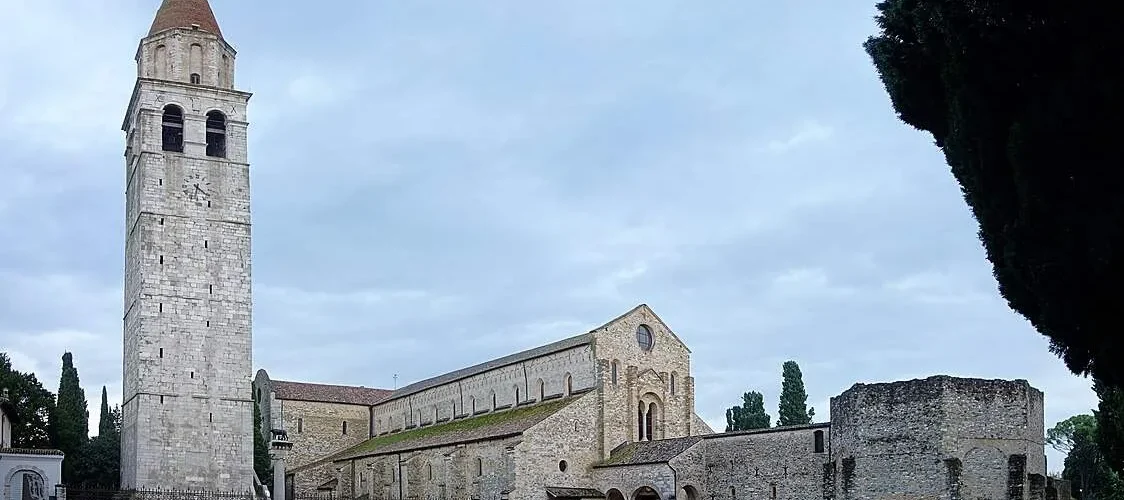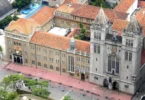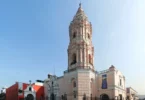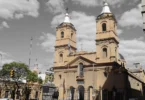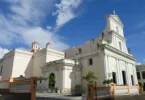Introduction
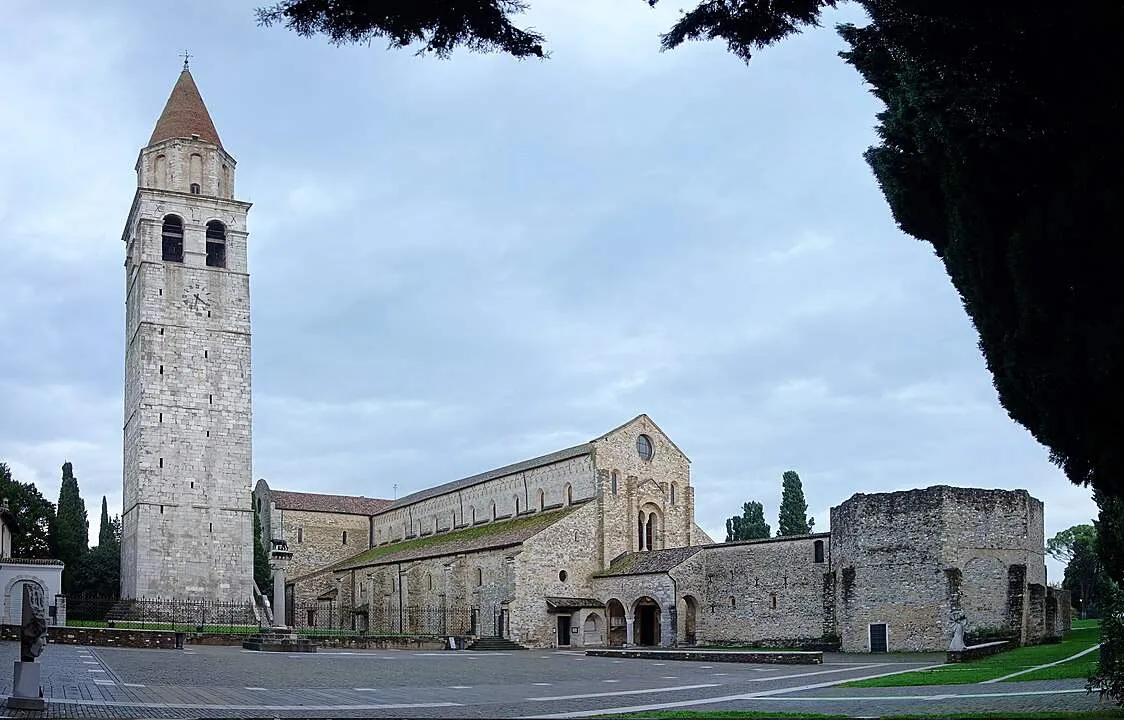
Basilica of Santa Maria Assunta ( Italian : Basilica Patriarcale di Santa Maria Assunta) is the chief church in the town of Aquileia , in the Territory of Udine and the area of Friuli-Venezia Giulia , Italy.
The first church traces all the way back to the fourth 100 years. The ongoing basilica was underlying the 11th hundred years and to some degree remade again in the thirteenth 100 years. It is situated on Through Sacra, disregarding the Piazza del Capitolo, alongside the campanile and baptistery.
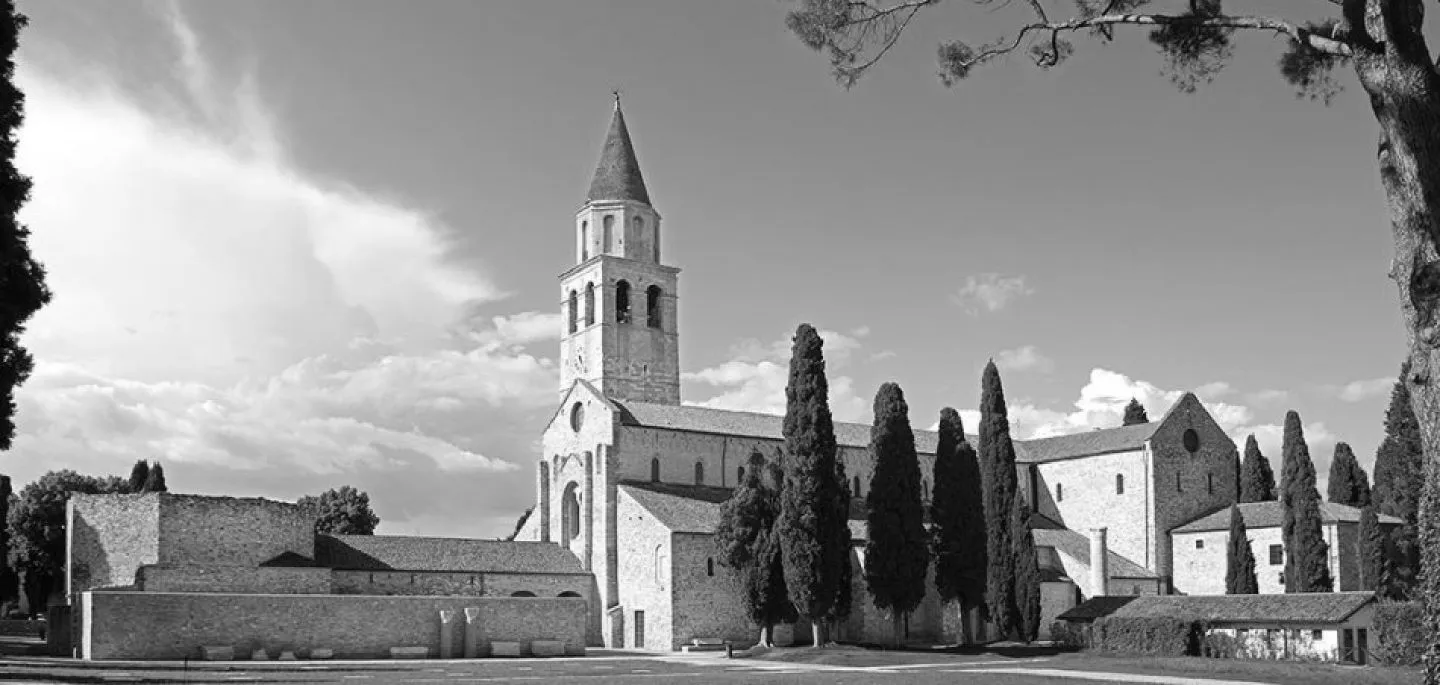
The Early Church (4th Century) and Theodorian Basilica
The Basilica of Santa Maria Assunta’s history begins in the 4th century, with the construction of the first Christian church in Aquileia. This original church, built under the leadership of Bishop Theodore and with the support of Emperor Constantine following the Edict of Constantine in 313 AD, became the foundation of the current basilica. The Theodorian basilica was constructed upon Roman buildings, possibly reusing walls from large Roman granaries that once occupied the area.
The Theodorian basilica was a functional religious space, accessed from the east. It contained various rooms, including service rooms and a changing area for catechumens who were preparing for baptism in the adjacent baptistery. The two parallel rooms of the basilica were arranged from east to west, with the church itself in one room and a space for Christian instruction in the other. These rooms were supported by columns, with exquisite mosaic floors. A vestibule connected the rooms, serving as a space for the baptized to receive confirmation.
Expansion and Destruction (5th Century)
By the mid-4th century, the basilica underwent further expansion under Bishop Fortunatianus, who added a large quadriportico to the façade and extended the basilica’s size to accommodate a growing Christian community. The basilica was divided into three naves supported by twenty-eight columns, and a baptistery was built to connect the new space with the old catechumenate.
During the 5th century, under Bishop Cromatius, the southern hall of the basilica was expanded, and new buildings, including the existing baptistery, were constructed. However, in 452 AD, Aquileia was devastated by an invasion led by the Huns, under Attila. The basilica and much of the city were destroyed, and the population was severely reduced. The southern hall remained in use, and some scholars suggest that it was rebuilt after the destruction, either as part of Cromatius’ work or following the destruction by Attila.
Aquileia also had strong theological ties to Alexandria, Egypt, particularly during the Arian controversy. This connection is evident in the influence of Alexandrian thought on Aquileia’s church and the role of Athanasius, the exiled bishop of Alexandria.
The Medieval Church (9th-11th Centuries)
In the early 9th century, Patriarch Maxentius, with support from Charlemagne, began restructuring the basilica. The southern hall of the old complex was reused, with the addition of a short transept, a semicircular central apse, two lateral apses, and a new portico. A crypt was also constructed during this period.
Following a powerful earthquake in 988, Patriarch Poppone initiated a significant restoration in the early 11th century, transforming the basilica into a Romanesque structure with Carolingian and Ottonian influences. This restoration included the rebuilding of the façade, raising the side walls, adding a wooden truss ceiling, frescoing the apse, and redoing the altar. The period also saw the construction of a new Patriarchal Palace and a towering bell tower, over 70 meters high, built using marble from the ancient amphitheater. The bell tower was inspired by the famous lighthouse of Alexandria.
Later Restoration and Modifications (12th-15th Centuries)
In the second half of the 12th century, Patriarch Ulrich of Treffen had the crypt frescoed, a project some scholars believe may have been initiated by Poppone. Another earthquake in 1348 led to further restoration efforts by Patriarch Marquard of Randeck, who replaced the round arches of the central nave with pointed arches.
The last major restoration took place in the 15th century when Venetian craftsmen were commissioned to create the basilica’s grand wooden ceiling, designed in the shape of a ship’s hull. This ceiling remains one of the basilica’s most striking features today.
Architecture of Basilica of Santa Maria Assunta, Aquileia, Italy
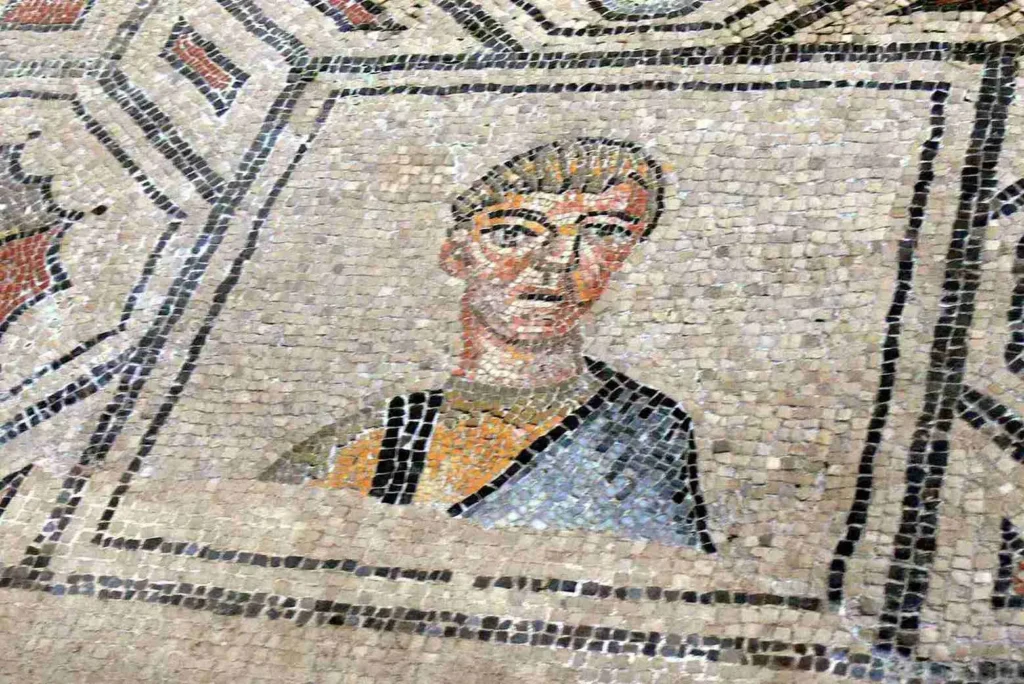
Interior : The Holy Sepulchre
Upon entering the basilica, visitors will find the Holy Sepulchre on the left. This 11th-century structure replicates the Holy Sepulchre in Jerusalem, based on descriptions found in medieval chronicles. It was used during Holy Week liturgies, marking a significant aspect of the basilica’s religious practices.
Mosaics: An Artistic Treasure
The basilica’s mosaic floor, covering an area of 760 m², is the oldest Christian mosaic in the West and one of the largest of its kind. The mosaics are arranged across four distinct bays, each offering a glimpse into early Christian art and theology.
First Bay: This section features portraits of donors, elliptical knots (referred to as Solomon’s knots), animals, and a symbolic panel depicting a contest between a rooster and a tortoise. This fight represents the ongoing battle between good and evil, a theme found throughout early Christian art.
Second Bay: The second bay contains portraits of men and women, often enclosed in medallions with clipeates. Among these are representations of the seasons. Some scholars suggest that these portraits may depict Emperor Constantine and members of his imperial family. Jesus is shown as the Good Shepherd, depicted with a pagan classical touch, carrying a sheep on His shoulders in the same manner as the Roman god Mercury. Surrounding Jesus are octagonal panels featuring various animals, including fish, deer, and birds.
Third Bay: The third section, which originally housed the altar, presents an allegorical scene of winged Victory, crowned and holding a palm branch. This symbolizes the triumph of the Christian faith, especially after Constantine’s Edict of Milan, which legalized Christianity and allowed it to thrive within the Roman Empire.
Fourth Bay: The final bay is a stunning mosaic carpet, depicting a sea filled with fish and telling the story of Jonah. Jonah’s tale, which involves his attempt to flee from God’s command and his subsequent rescue from the sea monster, symbolizes resurrection and the promise of eternal life. The mosaic includes detailed depictions of Jonah praying, being swallowed by the sea monster (a pistrix), and finally being spat out onto the shores of Palestine.
The center of this mosaic carpet includes an inscription dedicated to Bishop Theodore, expressing gratitude for his work in building and dedicating the basilica.
Additional Christian symbols, such as the fish (Ichthys), the rooster (symbolizing the light of Christ), and the tortoise (representing evil), are scattered throughout the mosaics, conveying theological messages about Christ’s victory over sin.
The Presbytery and Apse
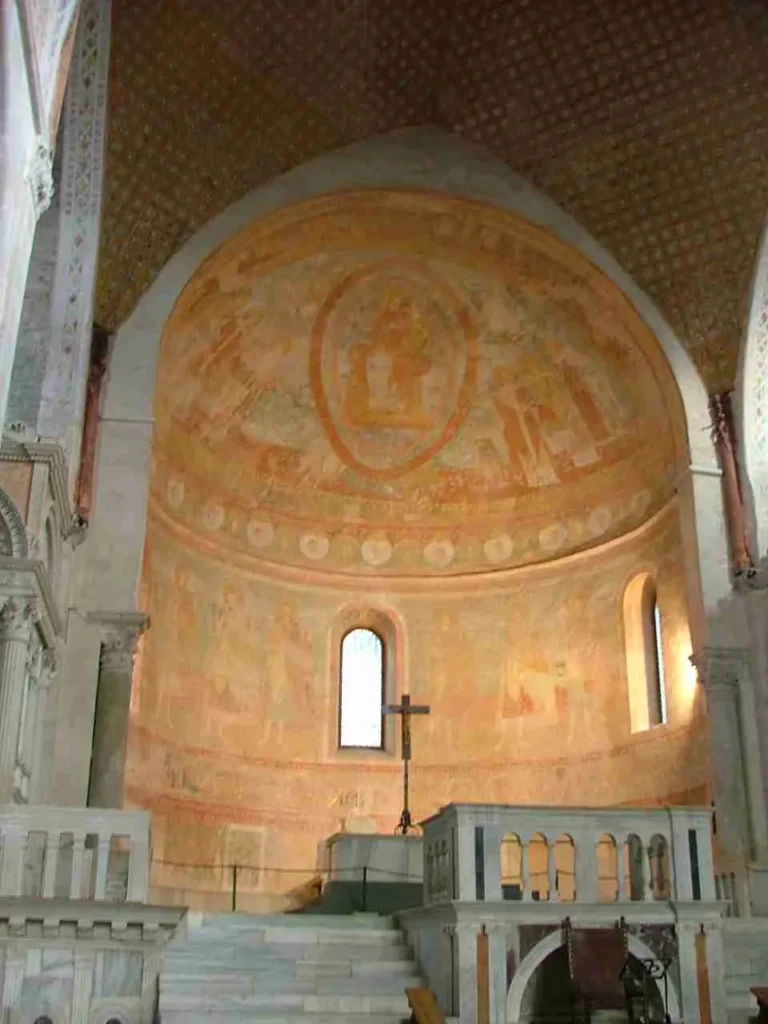
The apse of the basilica features a beautifully sculpted Tribuna Magna by Bernardino da Bissone. The basin and walls of the apse are decorated with frescoes from the time of Patriarch Poppone. Among the artwork is the Madonna and Child, surrounded by symbols of the evangelists, as well as depictions of saints from Aquileia. The fresco also shows Patriarch Poppone presenting a model of the basilica to the Virgin Mary, with the emperor Conrad depicted alongside Saints Ermacora and Fortunato.
The inscription beneath the saints commemorates the basilica’s consecration on July 13, 1031, in honor of Saints Ermacora and Fortunato.
Chapel of Sant'Ambrogio
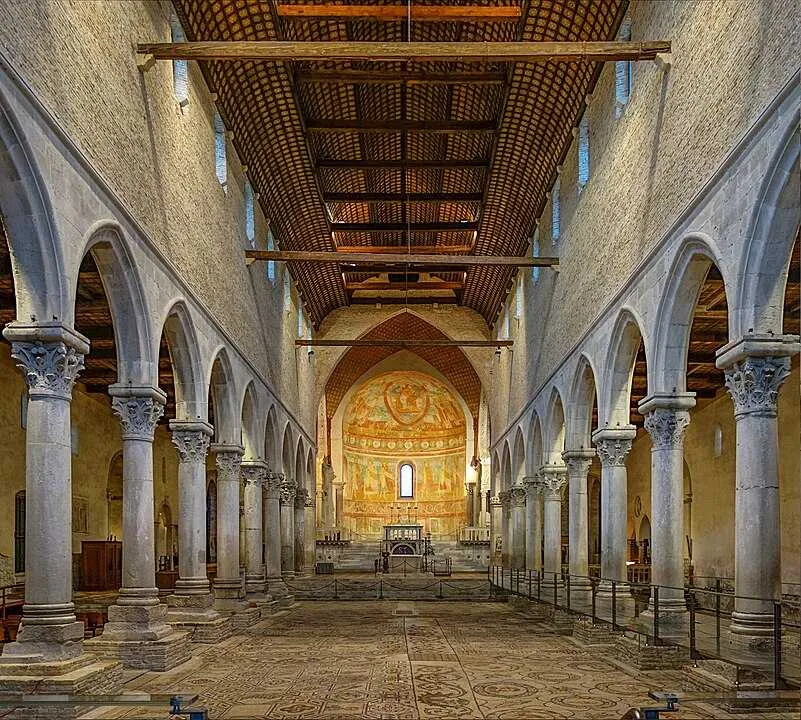
At the end of the right nave, visitors will encounter the Chapel of Sant’Ambrogio, also known as the Chapel of the Torriani. Commissioned by Patriarch Raimondo della Torre in 1298, the chapel serves as a family burial site. Several members of the Torriani family, including Raimondo, Pagano, Rainaldo, and Ludovico, are buried here. A fresco depicting the Crucifixion and the members of the Della Torre family adorns the chapel’s walls.
The Crypt of Frescoes
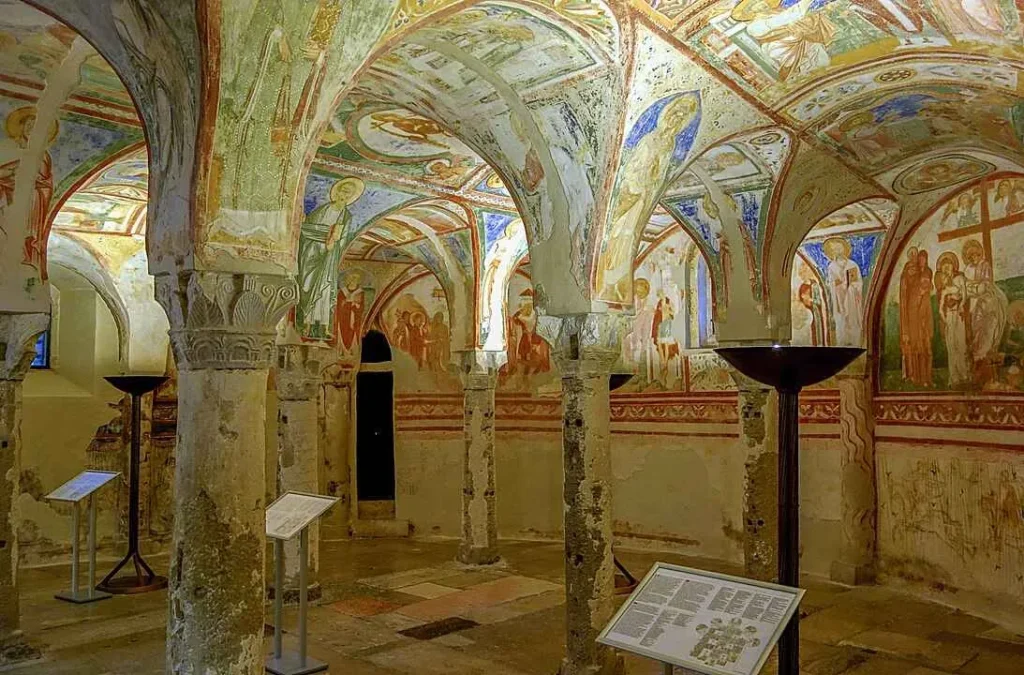
Located beneath the presbytery, the Crypt of Frescoes can be accessed through a small door. Originally built in the 9th century as part of Patriarch Maxentius’ renovation, it was later modified in the 11th century during the time of Patriarch Poppone. The crypt features frescoes depicting the Life of Jesus and Mary, with scenes such as the Dormitio Virginis and the Clash between a Western and Eastern Knight. The frescoes show the continuing influence of the Byzantine style, with some scholars dating them to the 12th century, under Patriarch Ulrich of Treven.
The Crypt of the Excavations
On the left side of the basilica, near the Holy Sepulchre, is the Crypt of the Excavations. This crypt, extending beneath the basilica and up to the bell tower, contains remains from three distinct periods, ranging from the Roman era to the 4th century. Visitors can observe mosaics that once adorned the early Christian basilica and previous Roman houses. Among the most intriguing images are those of a rooster and tortoise, symbolizing the cosmic struggle between light and darkness.
Baptistery
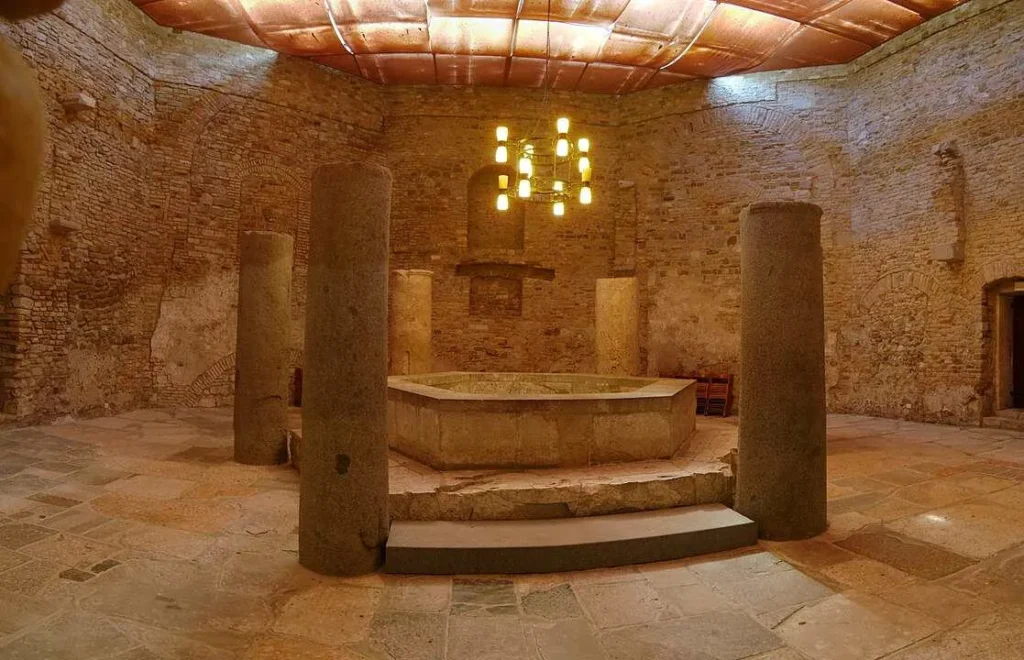
The Baptistery of the Basilica of Santa Maria Assunta is located prominently within the complex. Originally, the structure had a square exterior but featured an octagonal interior. During a medieval renovation, three of the four large corner niches were removed, altering the original design. What remains are six truncated columns, which are remnants of an ambulatory that once surrounded the space. These columns once supported the pillars that held the ancient dome, which tragically collapsed in 1790.
In the center of the baptistery stands the baptismal font, hexagonal in shape. This font was restored in 1739 at the expense of Emperor Charles VI of Habsburg. Excavations conducted in the early 1980s uncovered remains of an earlier octagonal font that preceded the current one.
Bell Tower
The Bell Tower of the Basilica of Aquileia rises 73 meters above the Piazza Capitolo, offering a striking and commanding presence that completes the architectural ensemble of the area. The design of this bell tower is believed to have inspired the similar structure in Carbonia, though on a smaller scale. The towering bell tower remains a prominent feature of the basilica complex, contributing to its historic and architectural significance.
Heroes' Cemetery
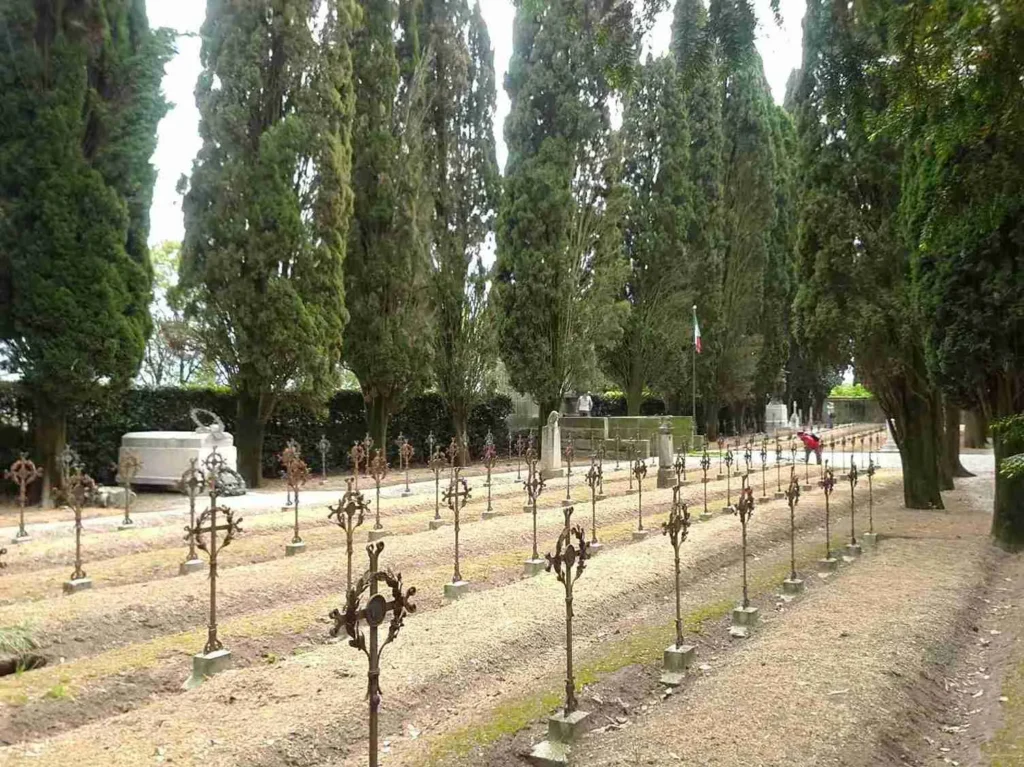
The Heroes’ Cemetery, located outside the Basilica around its apse, honors the fallen soldiers of World War I. It is the final resting place for ten of the eleven unknown soldiers, as well as Maria Bergamas, a mother who chose the coffin of the eleventh unknown soldier in memory of all grieving mothers. This soldier’s remains were later moved to the Altar of the Fatherland in Rome in 1921. The cemetery also holds the graves of General Alessandro Ricordi of Milan, commander of the Murge Brigade, and Captain Count Riccardo della Torre of Cividale, who were both killed by the same grenade on the slopes of Mount Ermada. On February 4, 2018, a Spiritual Twinning ceremony with the Church of the Sacrario di Redipuglia took place, during which the Honor Guard Regina Pacis of Redipuglia was deployed to honor the fallen.
Feast Day
Feast Day: 15th August
The Feast Day of the Basilica of Santa Maria Assunta in Aquileia, Italy is celebrated on August 15th, which is the feast of the Assumption of the Blessed Virgin Mary. This day commemorates the belief that the Virgin Mary was assumed into Heaven, body and soul, at the end of her earthly life. The feast day is of significant importance to the basilica, which is dedicated to the Virgin Mary.
Church Mass Timing
Saturday : 6:00 PM
Sunday : 10:30 AM
Church Opening Time:
Monday : 10:00 am – 4:00 pm
Tuesday : 10:00 am – 4:00 pm
Wednesday : 10:00 am – 4:00 pm
Thursday : 10:00 am – 4:00 pm
Friday : 10:00 am – 4:00 pm
Saturday : 10:00 am – 5:00 pm
Sunday : 12:00 pm – 5:00 pm
Contact Info
Address :
Piazza Capitolo, 1, 33051 Aquileia UD, Italy
Phone : +390431919719
Accommodations
Connectivities
Airway
Trieste Airport to Basilica of Santa Maria Assunta, Aquileia, Italy distance between 18 min (13.0 km) via SS14.
Railway
Cervignano RAilway Station to Basilica of Santa Maria Assunta, Aquileia, Italy distance between 12 min (7.4 km) via Via Giulia Augusta/SR352.

